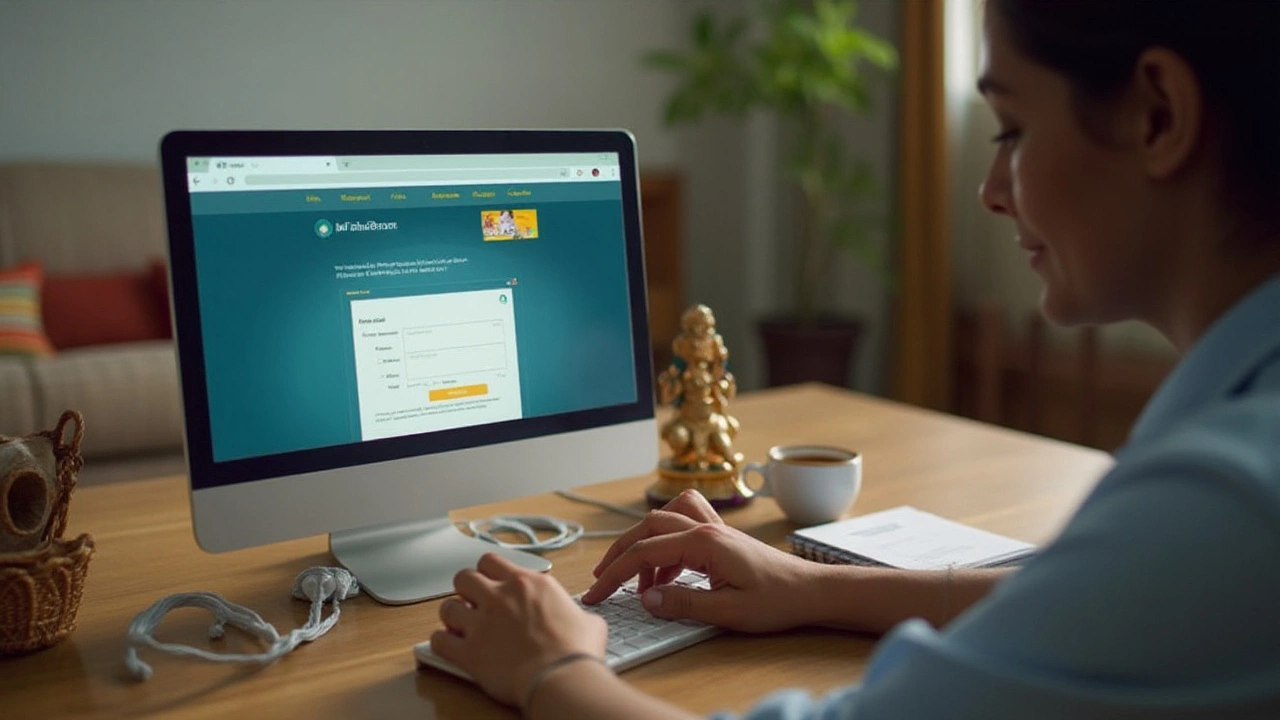
In the digital age, handling finances through online banking has become a necessity, offering convenience and efficiency. Among the bustling offerings, Indian Bank provides a robust net banking service that is accessible and secure.
For those looking to streamline their financial dealings, setting up net banking with Indian Bank is an easy and strategic move. This guide will walk you through the essentials—the steps you need to take, the benefits you'll reap, and how to protect your information while navigating the world of online banking.
Diving into this new territory might seem daunting, but with the right guidance, you'll find yourself managing your accounts with confidence and ease.
- Introduction to Indian Bank Net Banking
- Prerequisites for Online Registration
- Step-by-Step Registration Guide
- Security Tips for Safe Banking
- Benefits of Using Net Banking
- Troubleshooting and Support
Introduction to Indian Bank Net Banking
The onset of digitalization has remarkably transformed how we manage our finances, steering us away from traditional methods to a more current, streamlined approach. Indian Bank, a prominent financial institution in the country, offers a comprehensive net banking solution that caters to the diverse needs of its customers. Indian Bank Net Banking is designed to provide users with an easy-to-navigate platform, making transactions more accessible and less time-consuming.
Setting up an online banking account with Indian Bank can significantly enhance your financial management. It brings the bank's services to your fingertips by allowing you to handle a multitude of transactions without stepping outside your home. This is particularly beneficial in today's fast-paced world, where time is of both cultural and economic essence. The facility includes, but is not limited to, checking balances, transferring funds, paying bills, and even making investments, all accomplished with a simple click.
Customers often laud online banking for its convenience and security. According to Indian Bank's annual report, over 70% of its users have transitioned to net banking, citing ease of use and 24/7 availability as significant reasons for the shift. This service ensures your personal data is safeguarded, employing advanced security protocols and encryption methods. As per a study by KPMG, digital banking services in India have witnessed a 150% increase in usership over the past two years, a testament to the growing reliance on virtual financial management. The bank's continuous investment in the IT infrastructure assures its users unrivaled protection against cyber threats.
The transition to digital can be intimidating, especially for those unaccustomed to online services. To ease this process, Indian Bank provides detailed tutorials and customer support to assist users in familiarizing themselves with the online banking platform. The bank also offers instructions in multiple languages to cater to its diverse clientele. These resources, combined with a user-centric interface, make the process inviting even for those new to online banking.
The Onboarding Process
Opening an Indian Bank net banking account is a fairly straightforward procedure. The bank ensures that even those with basic tech skills can navigate the setup process with ease. As a first step, customers should ensure they have a working internet connection and access to the necessary devices, such as a smartphone, tablet, or computer. Existing account holders need to obtain an internet banking ID and password, which can be done by applying through their nearest bank branch or through the bank’s official website. It's this attention to accessibility that has seen Indian Bank rise to become one of the top five banks for net banking services in India.
"The digital banking wave is not just a trend but an overhaul in how people interact with their banks. Indian Bank is at the forefront, offering user-friendly, secure solutions to everyday financial needs," stated a spokesperson from a leading financial publication.
In addition to the core services, Indian Bank's net banking platform extends various features such as personalized account alerts, e-statements, and investment options, assisting users in making informed financial decisions. As more services become integrated with the digital platform, the scope of what one can achieve through net banking steadily expands, promising to revolutionize the financial landscape further.
Prerequisites for Online Registration
Taking the leap into the world of digital banking starts with understanding the essentials required for setting up your Indian bank net banking account. To embark on this journey, the first step is acquiring an active Indian Bank account. It's the foundational element without which you can't take advantage of the online banking services offered. Ensuring that your account is current and active is vital as it is your gateway into digital financial management. From paying bills and transferring funds to monitoring transactions—all these services hinge on a well-maintained bank account.
The second imperative requirement is a registered mobile number linked with your bank account. This mobile number serves as a crucial point for receiving One Time Passwords (OTPs) and alerts regarding your banking actions. Ensuring that the mobile number is operational and can receive texts smoothly is vital, as OTPs are a major security layer in online banking. It's this registered mobile number that Indian Bank will reach out to verify your identity, enhancing both accessibility and security.
In today's connected world, a safe financial journey begins with secure mobile registration. According to a report by CyberSafety India, 70% of security breaches in online banking could have been prevented with stringent OTP verification protocols.
Another key element is having a valid email address, which assists in correspondence and communication with the bank. Important notices, promotional offers, and updates on your account find a way to you through this email correspondence. Choosing an easily accessible and regularly checked email account is crucial as it keeps you connected with the bank's communication network, ensuring no critical information is missed.
You'll also need your debit card or credit card issued by the bank. This card does more than facilitate transactions; the card information is pivotal during the registration process. Entering correct details of this card, such as the card number, expiration date, and CVV, acts as a verification step confirming your identity and ownership of the account. It's a critical security step, underpinning the registration process with an extra layer of protection.
In addition to these, having a stable internet connection is a non-negotiable criterion. A reliable internet setup ensures that your interaction with the bank's digital platform is smooth and uninterrupted. Whether through a wired connection or mobile data, it's essential that your internet channel is robust enough to handle secure banking transactions.
Preparing Your Documents
Ensuring that all necessary documentation is at your disposal can greatly streamline the registration. Important documents such as proof of identity (like an Aadhaar card or PAN card), proof of address, and the bank's welcome kit that includes your customer ID and account number should be ready beforehand. Streamlining this documentation allows you to swiftly navigate through the paperwork, reducing potential delays during registration.

Step-by-Step Registration Guide
Setting up your Indian Bank net banking account is a seamless process if you follow the steps carefully. It begins with ensuring you have all the necessary documentation handy. The essential documents usually include your customer ID, which is easily found on the first page of your bank passbook, and your registered mobile phone number, which will receive an OTP for additional security during the process. It is crucial to confirm that your mobile number is correctly registered with the bank to avoid any hitches midway.
Before you get started, make sure your internet connection is stable. A stable connection will ensure that the process doesn't get interrupted, which could lead to errors. Also, to preemptively tackle any issues, it's a good idea to try this on a desktop or a laptop for a better viewing experience, although it is certainly possible on a mobile device. Once you're set, open the official Indian Bank website. Navigate directly to the net banking section to avoid any phishing websites mimicking the official page.
On the net banking homepage, you should see a clear option to register as a new user. Clicking on this will open the gateway to starting your digital banking journey. Follow the prompts; the website is designed to guide users gently through each step with clear instructions. Enter your customer ID and registered mobile number when requested, and then submit your information to trigger the OTP process. Keep your phone close by because you'll need to enter the OTP within a stipulated time to verify your identity.
Once the OTP verification is successful, you'll be prompted to create a username and a password. Crafting a strong password is of utmost importance—something secure yet memorably unique, incorporating numbers, symbols, and a mix of upper and lower case letters. Once you've set up your login credentials, you'll be directed to a setup screen for configuring your transaction password. This separate password adds an extra layer of security for managing funds and must differ from your login password.
After completing these initial steps, you need to log out and then log in again using your new credentials to ensure everything is in order. On your first login, you'll be asked to choose a set of security questions. These questions help the bank verify your identity in case you forget your password or need to change security settings. Make sure the answers you provide are consistent yet hard for others to guess.
Consider visiting the FAQ section on the website or exploring the customer service portal if you run into any hurdles. Many common issues and their resolutions are well-documented, saving you the hassle of waiting on the line for customer service.
"The rise in digital banking has reshaped the way consumers interact with their banks, offering unprecedented access." — Reserve Bank of India Report, 2023
Finally, familiarize yourself with the net banking interface, spending some time exploring the different features available. This includes understanding how to view account statements, set up or modify standing instructions, and add billers for easy payments. Navigating the interface becomes intuitive with regular use.
Security Tips for Safe Banking
When it comes to managing your finances online, security is non-negotiable. While the digital world offers unprecedented convenience through net banking, it also comes with its fair share of risks. One of the paramount tips is to ensure that your passwords are strong and unique. A strong password is at least 12 characters long and includes a mix of letters, numbers, and symbols. Avoid using easily guessable information like birthdays or common words. Consider using a reputable password manager to keep track of your different passwords safely.
Another critical step involves keeping your computer or device secure. Regularly update your software, including antivirus programs, to help protect against malware that could compromise your sensitive banking details. Always log out from your account after your session, especially when using public or shared computers. This simple action can save you from unauthorized access even if your device is lost or left unattended.
Be mindful of phishing scams, which have become increasingly sophisticated. Always verify the email addresses and links you receive by double-checking them through official Indian Bank communications or customer service. Be wary of emails that urge you to provide personal information or redirect you to spoofed websites. As cybersecurity expert Bruce Schneier states,
"Security is not a product, but a process."This suggests that vigilance and continuous awareness are key to maintaining cyber safety.
Using Indian bank net banking often involves multiple communications and transactions. Enabling two-factor authentication (2FA) can provide an additional layer of security, making it much harder for criminals to access your account. This authentication requires a second piece of information beyond your password, often sent via SMS or through an authentication app, ensuring you're the only person who can access your account, even if someone else knows your password.
Finally, regularly review your bank statements and transaction history. This practice doesn't just help in financial planning but also in noticing unauthorized transactions promptly. Familiarize yourself with the official banking app or website interface and make sure you are using the genuine site. Elect to receive email or SMS alerts for every transaction. This habit keeps you in the loop and can serve as an early warning sign of suspicious activity. By paying close attention to these security measures, you can take full advantage of your online banking experience while keeping your finances protected.
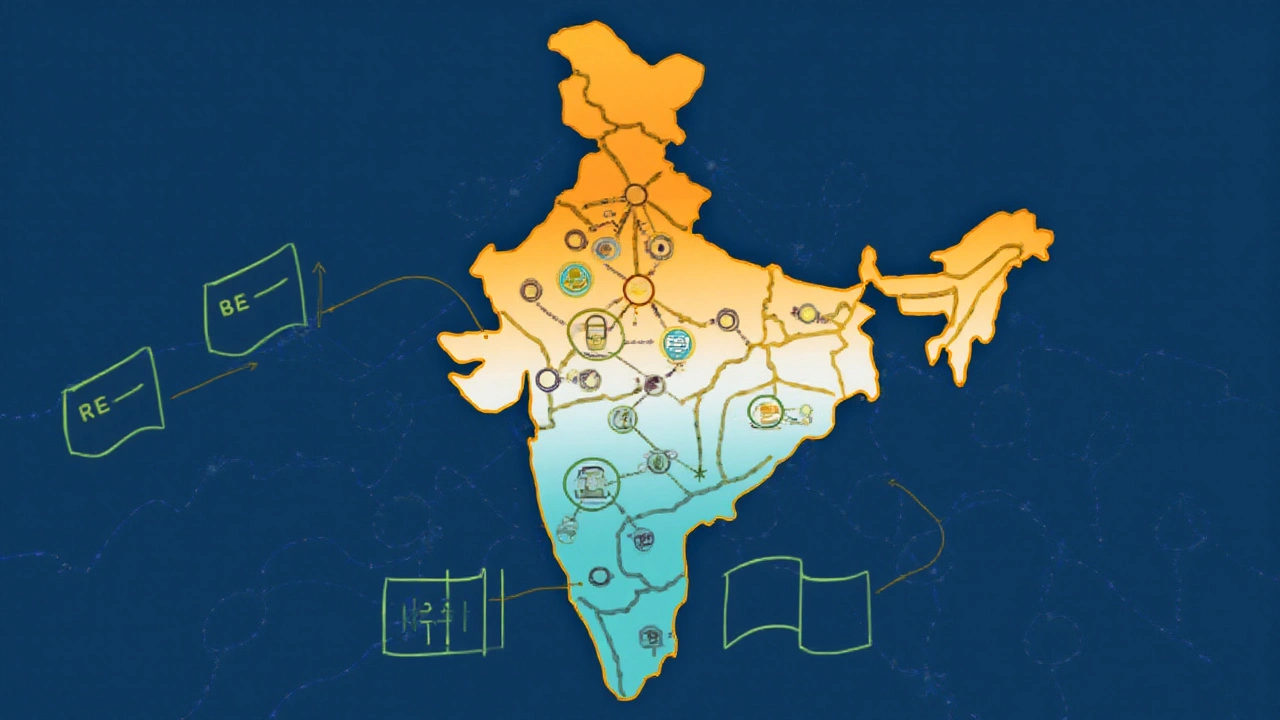
Benefits of Using Net Banking
Embracing net banking opens a gateway to unparalleled convenience in managing your finances. One of the most prominent advantages is the ability to conduct transactions right from the comfort of your home, eliminating the need for frequent bank visits. This shift to digital has streamlined operations for many, ensuring that basic banking tasks like fund transfers, bill payments, and account statements are just a click away. The flexibility to bank at any hour of the day, regardless of official bank hours, grants users the liberty to manage their money in alignment with their schedules.
The security aspect is crucial, and Indian bank takes this seriously with robust encryption standards and multi-factor authentication processes. These layers of protection ensure that your online transactions are safe from unauthorized access, assuring users of the security in every step they take online. This level of reassurance allows individuals to perform high-value transactions without the continuous worry of security breaches that often accompany online endeavors.
Moreover, net banking provides a comprehensive overview of one's financial standing with just a few clicks. Users can check their balance, analyze spending habits, and access loan details without the usual paperwork and long lines. This transparency and ready accessibility to information allow customers to make informed financial decisions quickly and efficiently. Add to this the various offers and discounts available exclusively to online banking users from time to time, and the allure of net banking becomes even more apparent.
There’s also a significant reduction in paperwork, leading to a more eco-friendly footprint. Traditional banking can often mean an avalanche of paper trails, but with net banking, most processes are digitized. This transition towards a paperless environment not only benefits the planet but also minimizes the clutter for the user.
"The advent of net banking is a revolutionary shift in the banking landscape, allowing users to experience seamless and secure transactions in the digital age," says an expert from the financial sector.
A fascinating statistic highlights the growing preference for online banking: a recent survey indicated that more than 65% of urban dwellers in India prefer digital banking solutions over traditional banking methods, and this number continues to grow as more users discover the convenience of online banking. This paradigm shift is not limited to urban regions; rural areas too are gradually embracing net banking, thanks to improving digital infrastructure and government initiatives promoting financial literacy.
Troubleshooting and Support
Stepping into the realm of online banking with Indian Bank promises a seamless experience, yet technical hitches can occasionally arise. Knowing how to tackle these issues beforehand empowers users to handle disruptions effectively. The most common roadblocks often stem from login difficulties, transaction errors, and connectivity issues. If login attempts fail, it is usually due to an incorrect password or username entry. To bypass this, double-check credentials and ensure the Caps Lock key isn’t interfering by mistake. Another preventive measure is periodic password updates, boosting security and reducing the risk of access denial.
In instances where transactions do not go through, patience and proper investigation are key. Begin by tracking your internet connection, as a weak network can impede the process. Following a disruption, your transaction's status can often be found in the 'Transaction History' section. This feature is designed to provide clarity and relieve stress, leaving no room for ambiguity about whether an action was completed. In the words of Tom Anderson, a respected banking analyst:
"Reliable customer support is the backbone of online banking, ensuring swift resolution aids in maintaining customer trust."
When in doubt, the Indian Bank customer care team serves as a reliable ally. Accessible through several online platforms, they are equipped to handle any query or issue. Their comprehensive support includes everything from assisting with account blockages to guiding users through step-by-step resolutions. Online resources, including FAQs, video tutorials, and user forums, further enhance this helping hand. Each platform is crafted to address unique customer needs, making your banking experience as fluid as possible.
On rare occasions, technical maintenance by the bank might trigger temporary service interruptions. Staying informed about these scheduled downtimes is crucial. Information regarding such events is typically circulated well in advance via email notifications or available on the bank's official website. Proactive measures such as these ensure you aren't caught off guard.
For users seeking a deeper understanding, knowledge bases and community forums are invaluable. They present a treasure trove of discussions where individuals share personal experiences, offering solutions that bank representatives might overlook. Users are encouraged to regularly visit these platforms as they can often discover tips and tricks to enhance their user experience. As net banking continues to evolve, the notion of adaptability becomes more important than ever.
Below is a brief table outlining common issues and their straightforward resolution methods:
| Issue | Resolution |
|---|---|
| Forgot Password | Use the 'Forgot Password' function to reset via email/phone verification |
| Transaction Failed | Check network, inspect 'Transaction History' for status |
| Account Locked | Contact customer care for identity verification and unlocking |
| Website Down | Check maintenance schedule on the official site |
Equipped with this knowledge and a proactive stance towards common pitfalls, users can confidently navigate the digital paths of net banking. Remember, an open line with customer service, regular engagement with community forums, and an ever-active awareness of bank notifications form the holy trinity of effective online banking support.


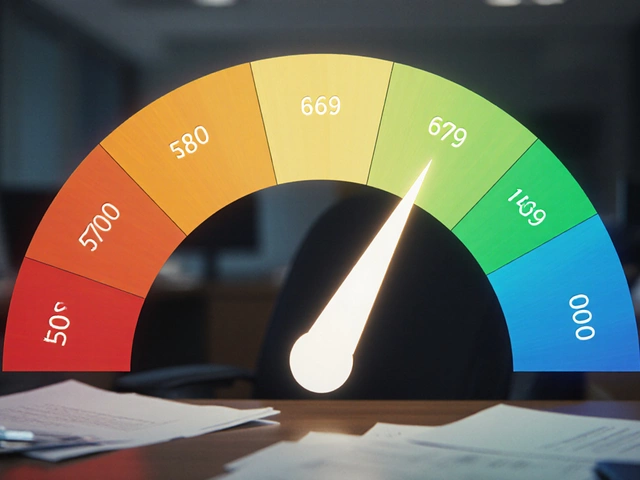
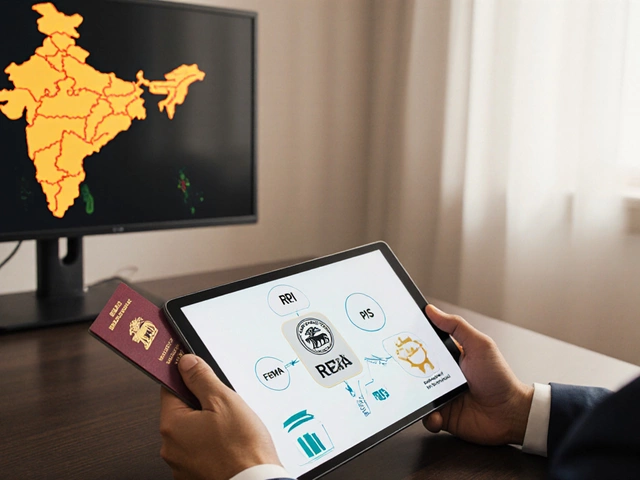



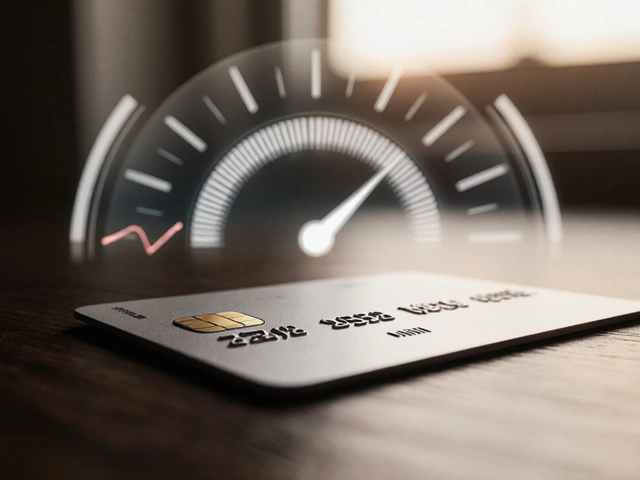
Write a comment